The lunch crowd at Figaro was sparse. Regulars, by the looks of them, wore the serious, almost sanctified air of Southern lawyers and insurance men. Across from my hotel stood Newberry’s memory stones, an Ode to the Dead: Regulars, Rebs, Wildcat Doughboys, Yanks, G.I.’s, and the like. Just me at the table, scrolling through photos I shot of the monuments. The lighting was off, too harsh, needed clouds. I ordered the Cuban.
In 1853, South Carolina allowed private banks. The Bank of Newberry was the first in the upper state. Built in 1852, it still stands. With the millennium’s turn, it became a place for breaking bread, though the bartender will still break a bill for you.
Eyeing the long room, I ate my sandwich. The bank’s bones are there. An old vault door’s open a bit, its frame ornate. Chandeliers dangle above, high-born yet warm. At the far end, the bar stands, reliable and familiar as an old hunting dog. Here’s a place where the enduring spirit of the South anticipates the nightly ritual of dining—good food, fine whiskey, old stories, and new gossip.
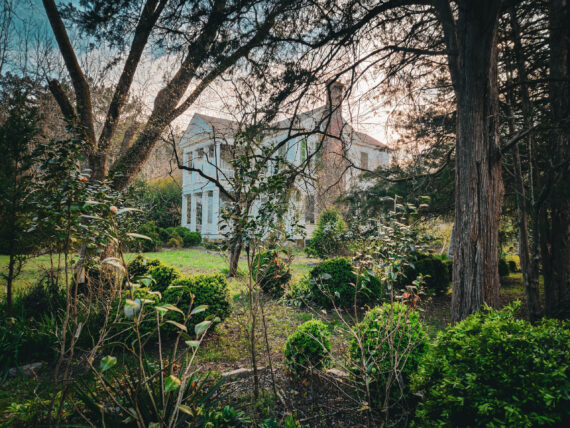
I didn’t find myself there by chance. Dr. James Everett Kibler was supposed to get the William “Singing Billy” Walker Award for Lifetime Achievement in Southern Letters at the Upcountry Literary Festival, which a buddy of mine invited me to. Then, without warning, the festival was called off. Worked out for the best, though Dr. Kibler invited us to his ancestral home—to his father’s fields, to Ballylee.
Come first light, I loaded up books, Bourbon, and Madeira, and left Franklin, TN. Got to Newberry, met up with my friend Patrick, and we both noticed a lot of Canadian plates. Turns out, Newberry’s the St. Patrick’s Day go-to spot for a handful of Canucks. We drove through rural woods to the historic Ballylee, no itinerary in hand, now synced to Kibler time. Amongst history and book-loving Southerners, no awkward introduction was needed. Though I had never met Patrick or Dr. Kibler before, we talked like old soldiers revisiting the glory days.
From porch to house we moved, stepping from hand-hewn planks to time-softened rugs, each woven with stories older than our own. Finding sanctuary in the parlor, easing into chairs where Rebels sat. Clocks held no dominion here. The sun held sway. I’m unfit to capture the grandeur of a room whose furnishings have outlasted empires. It’s filled with “Beloved books that famous hands have bound, Old marble heads, old pictures everywhere,” as William Butler Yeats penned in “Coole Park And Ballylee.” The weight of South Carolina seemed to hang upon its walls.
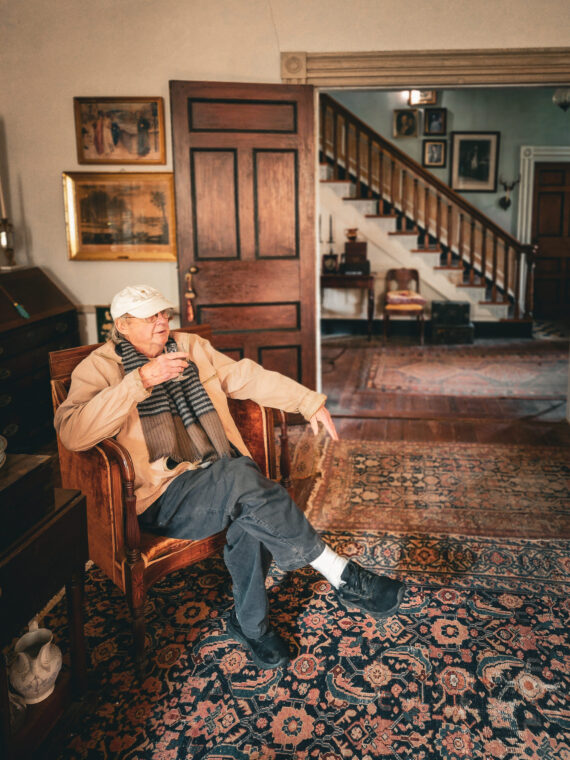
Dr. Kibler gently opened the creaking bookcase, drawing my eyes to aged spines—each a link in a long chain. He chose each book reverently, sharing tales of their origins and contents. This was a masterclass in Classical, English, and Irish poetry. I spoke, unsure, confessing my struggle with poetry’s form and rhythm. Dr. Kibler gently countered that while such skills have their place, the true spirit of poetry lives in the simple reading of the words. With glasses frequently refreshed with Madeira, we moved from parlor to paradise—time to tour the land—”A spot whereon the founders lived and died / Seemed once more dear than life; ancestral trees, / Or gardens rich in memory glorified . . .” (Yeats)
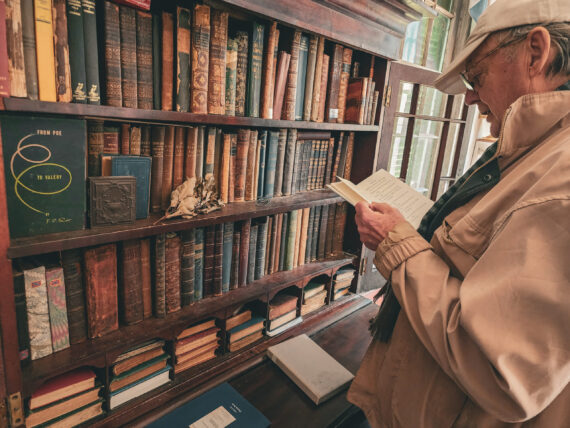
Frost and deer, those twin merchants of flora’s end, had recently made their rounds, yet the garden stood defiant. Flowers, plants, and trees were honored with their given names in dual tongues, English and Latin. Patrick and I, mere observers, trailed our guide through boxwoods old enough to spot Sherman in a lineup. We ambled past crepe myrtles and colonial camellias, urged to pause because “we must smell” some bloom.
Pollen painted our boots like yellow chalk as we trod to Dr. Kibler’s seed shack, the air filled with the earthy promise of growth. The stream chuckled underfoot as we crossed. Back at Ballylee, we were served a Kibler delicacy—toasted Chicken Salad sandwiches. Light drained from the sky, exposing day’s end.
Dawn greets Saint Patrick’s Day. Canadians, clad in the hues of verdant shamrocks, stir, soon to be awash in emerald tides of beer and the golden embrace of Crown Royal. Patrick and I collect Dr. Kibler, setting our sights on Camden—eluding the soulless interstate, obviously. We ride and listen.
“This is where the soil turns sandy.”
“We’re about to cross the old Wagon Road.”
“Coming up on the left is a beautiful Antebellum home.”
“Down that road, so and so is buried, but you can’t go that way unless you are prepared to ford the river and a handful of streams.”
We came first to Historic Camden and the Revolutionary War Visitor Center. Dr. Kibler recognizes a familiar face, a fella he met at the previous Carolina Cup, they talk Sir Archie. Back in the car, it’s a short drive to where we’re really headed. We roll by Monument Park on Laurens and Boykin Park on Chestnut, taking in the grand estates along unpaved paths. This is horse country.
On arrival at Holly Hedge (I must name my house), we are met by our gracious hosts with the time-honored manner of the South. This storied estate, steeped in the legacy of the “Immortal 600,” also known as the William E. Johnson House, was previously owned by a horse breeder by the name of Marion duPont Scott. We get the lay of the land.
Two Cedars of Lebanon held their silent vigil amongst the elliptical garden. On their flank, a Magnolia tree, once the largest in South Carolina until scalped by Hugo. We toured the home before settling in the vast drawing room.
Dr. Kibler churned our souls with two new poems penned for the now-forgotten literary festival. He transported us to May 3, 1916. Padraig Pearse and Thomas MacDonagh appeared. The scent of spent gunpowder and rain-soaked cobblestones lingered. In those trembling lines, you could hear the clamor of Dublin, the soft echo of defiant words against stone walls, the sharp report of gunfire. Here, under Kibler’s watchful eye, these figures walked again, their legacy as enduring as the land.
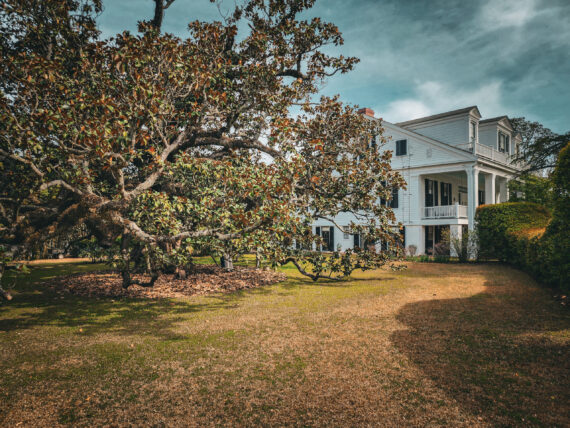
If the day ended there, I’d have been content as Paul. But it was only 1pm. Brigadier General James Chesnut, Jr. and Mary Boykin Chesnut had summoned us. We were expected at Kamschatka. Recently owned by the Buckley family before changing hands, I’d advise reading all about one of Camden’s crown jewels in Mrs. Chesnut’s diary—I assume you’re acquainted. Again, the hosts displayed unparalleled hospitality, affording us the rare privilege to wander the halls of a home rooted in the rich heritage of the South.
We dawdled in the Camellia garden at Kamschatka, under Dr. Kibler’s tutelage, who seemed to know something about every bloom there. As storm clouds bruised the sky, we reluctantly departed. As we drove, Dr. Kibler spun tales of his teaching tenure at Georgia, his days as a student, and his trips to Virginia in his ’62 Fairlane researching Faulkner. He can count on one hand how many times he’s used the a/c while driving. “I drive when it’s not hot.” His People didn’t need a/c, so he didn’t need it. We pull into Ballylee.
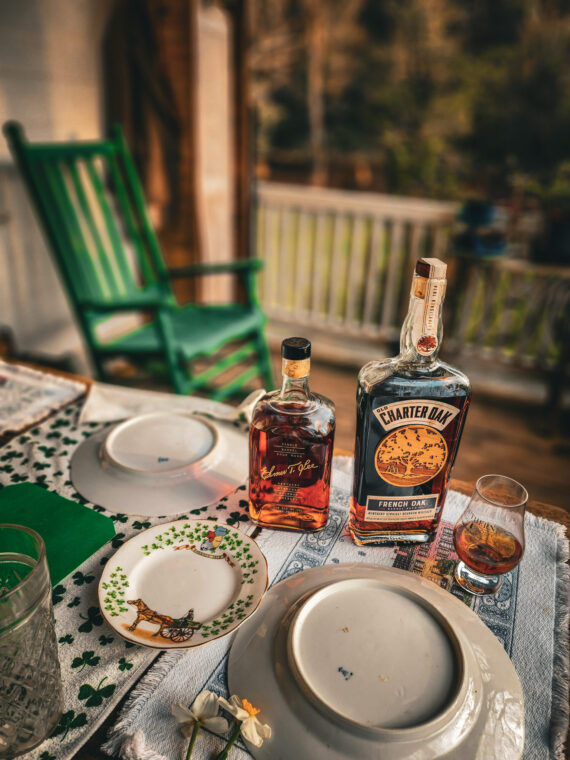
The day’s end wasn’t welcome just yet, so we retreated to the parlor, talking Southern magazines and journals. An unopened bottle of Madeira beckoned. The sun’s setting went unnoticed, until the sudden squawk of radios and the harsh beams of flashlights carved through the gathering dark. For a second, I thought it was about to get all 2am History Channel-like. Yet, the scene was wholly other—the Newberry County Police were on the porch hollerin’ for Mr. Kibler. Some nosy neighbor called them. Said he ain’t answered his phone in a while. Well, I guess it’s time to head home. We utter some parting words.
I count it an honor to have spent two days with the Tower on the Tyger, Dr. James Everett Kibler. A great man. A Southern man. Until next time.




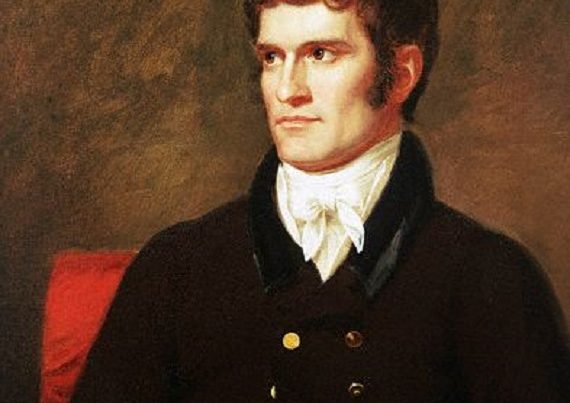

I would like to have shared a glass of bourbon or mint julep with you. Having recently read “A Dairy from Dixie” by Mrs. Mary Boykin Chestnut, I would love to visit Mulberry Plantation in Camden, SC. Thanks for sharing your wonder story.